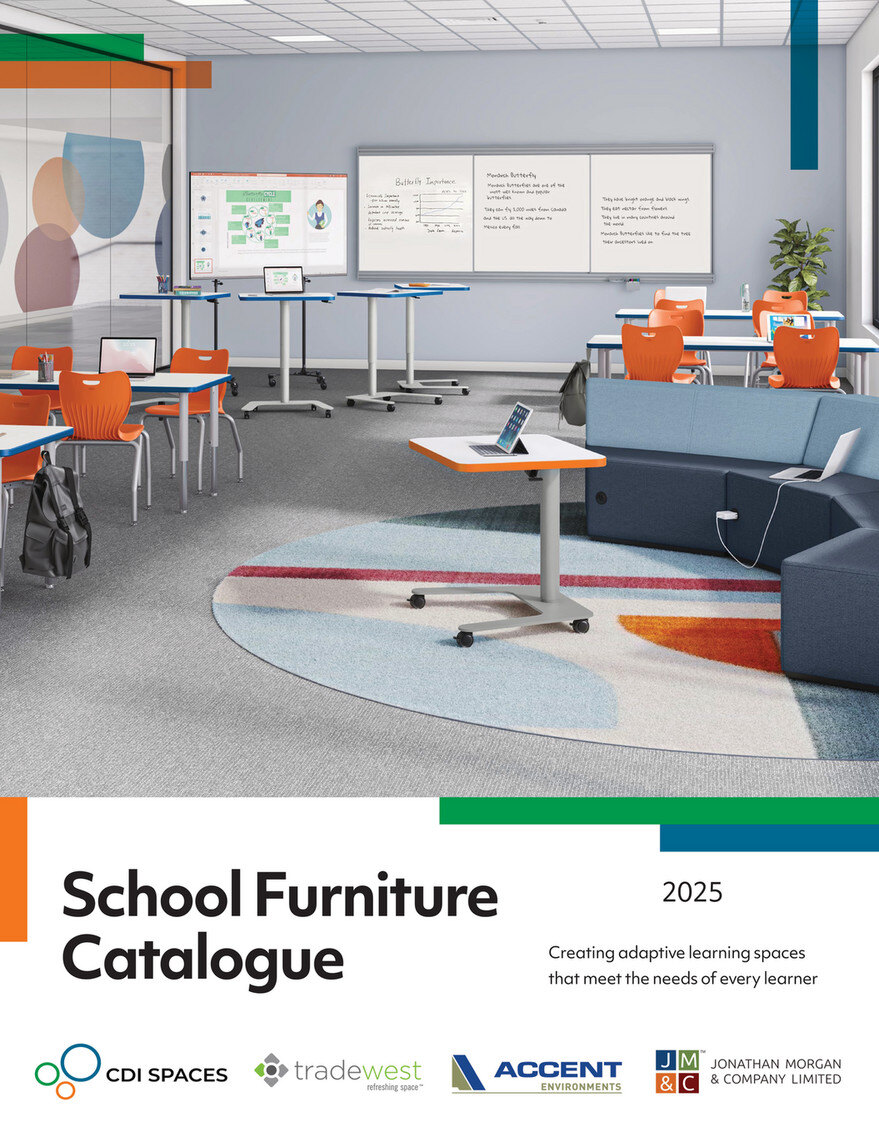Designing Brain-Friendly Classrooms: How Neuroeducation Principles Shape Learning Spaces for the Future
September 26, 2024
.jpg)
Designing for tomorrow isn't just about keeping up with the latest trends—it's also about returning to the most foundational part of learning: our students' brains. In the field of neuroeducation, cutting-edge neuroscience meets the best of educational innovation. Classroom design that's informed by it not only honors how the brain works but turns classrooms into spaces that enrich learning in the short and long term.
This blog will explore how to shape modern classroom environments with adaptable furniture solutions—according to the principles of neuroeducation. Get ready to leverage brain-friendly design methods to support flexibility, collaboration, and cognitive development in your classrooms.
The Science Behind Neuroeducation and Design
What is Neuroeducation?
This dynamic field of study offers insights into how different brains take in information, leading to a broader and deeper understanding of what students might need in the classroom environment to optimize learning outcomes. Applying neuroeducation to classroom design can help educators break through the one-size-fits-all stereotypes and find ways to encourage focus without having to fight students for it.
Curating Brain-Friendly Environments
Classrooms that eliminate obstacles between students and the subject they're studying—instead of creating more of them—are some of the most brain-friendly environments. With enhanced student engagement comes fewer distractions—allowing students to absorb more knowledge. And the more likely students are to participate, the more likely they are to practice—returning again and again to learning activities that feel rewarding, strengthening students' learning and retention over time.
Focusing on Future-Oriented Learning Spaces
As our understanding of neuroeducation continues to evolve, so should our spaces. This is why classrooms designed today must be set up to adapt to student needs in the future. Flexible spaces span this gap by continuously enriching development while fostering the creative and critical thinking skills students need to succeed in a rapidly changing world.
Designing for Neuroeducation: Key Principles to Optimize Learning
Offer Opportunities for Multisensory Learning
A range of visual, auditory, and tactile elements in the classroom simultaneously engages multiple regions of students' brains. For example, modular furniture that supports hands-on projects can allow more high-energy students to engage in learning actively. Flexible setups can accommodate individual work and group collaboration in the same learning session and cater to diverse sensory preferences. These multisensory designs strengthen neural pathways and encourage curiosity, making lessons more impactful.
Personalize Learning to Reduce Distractions
Teachers and students alike can tailor personalized learning environments to support individual cognitive strengths and challenges. Customized learning means facilitating small group sessions and whole-class activities in the same space—an approach that requires modular seating and easy-to-move tables. Movable bookshelves can also serve as functional partitions to reduce distractions and create privacy, which can be especially helpful for neurodiverse learners who feel overstimulated in class. These personalized environments ensure that students can work in ways that align with their needs, increasing productivity in the classroom.
Promote Physical and Mental Well-Being
Of course, we all know that the brain is part of our body, but understanding their interconnectedness—and applying this to your classroom's furniture choices—is crucial to fostering students' physical and mental well-being. Features like ergonomic seating and standing desks promote movement, while quiet areas offer solitude for mindfulness exercises and relaxation—both reduce students' stress levels. Stimulating and engaging lessons can also trigger neurotransmitters, creating a more interesting learning experience. Overall, these wellbeing-focused elements help reduce the cognitive load placed on students by creating a supportive and motivating environment where they can perform at their best.
Create Positive Associations with Learning
Classrooms that cater to age-appropriate learning and cognitive development stages create realistic expectations in the classroom and can help nurture positive associations with learning. Flexible learning spaces that make teamwork and getting help from others easy can help foster a growth mindset. Furniture that creates comfort and is appealing to students can inspire them while decreasing stress and fatigue. Even the colors in a classroom can brighten students' perceptions of school.
As we look toward the future of education, integrating brain-friendly furniture and adaptable design elements will be key to building spaces that support cognitive development and academic success. The result? Classrooms where students are empowered to thrive.
With aesthetics in mind—neuroeducation-informed design creates deeply supportive environments that actively fuel students' brains. From multisensory learning opportunities to personalizing spaces to meet diverse needs and promote physical and mental well-being, educators can transform traditional classrooms into dynamic, adaptable environments. By fostering authentic engagement, students form positive associations with learning and become better equipped to develop the comprehension, critical thinking, and collaboration skills they need for the future. As neuroscience reveals more about how students learn, will we rise to the challenge of creating spaces that truly nurture their minds and potential?
If you're ready to incorporate neuroeducation principles into your learning spaces, contact CDI Spaces for a consultation to explore how that might work in your classrooms.

